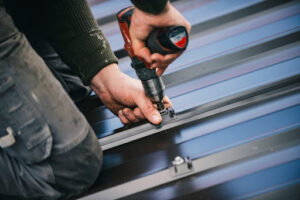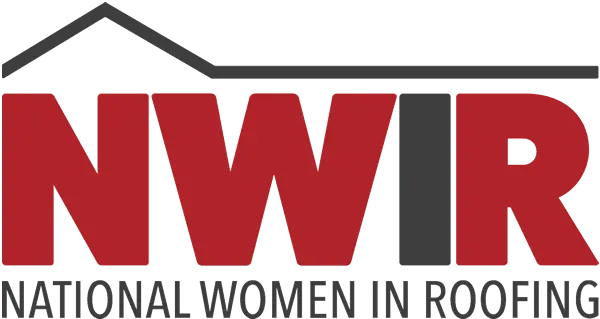How to Select the Best Underlayment for Your Metal Roof Installation?

The Importance of Selecting the Right Underlayment for Metal Roofs in Florida
When installing a metal roof in Florida, choosing the right underlayment is critical to the longevity and performance of your roofing system. The harsh climate, characterized by high humidity, intense heat, and frequent rainstorms, demands a robust underlayment that can withstand these conditions. This article will guide you through the essential aspects of selecting the best underlayment for your metal roof installation, ensuring that your investment is protected and your home remains safe and secure.
Understanding Metal Roof Underlayments
What is an Underlayment?
An underlayment is a protective layer installed directly on the roof deck, beneath the metal roofing material. Its primary purpose is to act as a secondary barrier against moisture, providing an additional line of defense to prevent leaks. In Florida’s climate, where heavy rainfall and humidity are common, a high-quality underlayment is essential for protecting your roof and home.
Benefits of Underlayments
- Moisture Protection: Prevents water from seeping into the roof deck.
- Energy Efficiency: Certain underlayments help reduce heat transfer, lowering cooling costs.
- Noise Reduction: Provides a buffer against noise from rain and hail.
- Chemical Barrier: Protects the roof deck from harmful chemicals and resins.
Types of Underlayments
Asphalt-Saturated Felt
Asphalt-saturated felt is one of the most traditional underlayments used in roofing. It’s made from organic or fiberglass materials that are soaked in asphalt. While it is cost-effective and easy to install, it may not be the best choice for Florida’s climate due to its susceptibility to deterioration in extreme heat and humidity.
Pros:
- Affordable
- Easy to install
Cons:
- Prone to tearing
- It can become brittle over time
- Less effective in high-humidity environments
Synthetic Underlayment
Synthetic underlayments are made from materials like polypropylene or polyester. These underlayments are specifically designed to be more durable and resistant to the challenges posed by Florida’s climate. They are lighter, stronger, and offer superior moisture protection compared to traditional felt.
Pros:
- Highly durable
- Resistant to UV damage
- Lightweight
- Superior water resistance
Cons:
- More expensive than asphalt-saturated felt
Self-Adhering Membrane
Self-adhering membranes are a premium choice for underlayments. These materials come with an adhesive backing that allows them to stick directly to the roof deck, creating a watertight seal. This type of underlayment is particularly effective in preventing leaks, making it an excellent choice for Florida’s frequent rainstorms.
Pros:
- Provides a watertight seal
- Highly effective in preventing leaks
- Excellent for high-humidity and rainy conditions
Cons:
- Higher cost
- Requires professional installation
Factors to Consider When Choosing an Underlayment

Climate and Weather Conditions
Florida’s unique climate, characterized by high humidity, intense sunlight, and frequent rain, should heavily influence your choice of underlayment. In this environment, synthetic underlayments or self-adhering membranes are often the best choices due to their superior durability and moisture resistance.
Key Considerations:
- Humidity: Opt for underlayments that resist moisture absorption.
- Rainfall: Ensure the underlayment provides excellent waterproofing.
- UV Exposure: Choose materials that are UV-resistant to withstand Florida’s intense sunlight.
Roof Slope
The slope of your roof also plays a critical role in determining the best underlayment. Steeper slopes allow water to drain quickly, which might allow for lighter underlayment. However, for lower-slope roofs that are more prone to water pooling, a more durable and waterproof underlayment is necessary.
Recommendations by Roof Slope:
- Steep Slopes: Synthetic underlayment can be sufficient.
- Low Slopes: Self-adhering membranes offer the best protection.
Building Codes and Regulations
Florida’s building codes are among the strictest in the nation, especially when it comes to roofing. These regulations are designed to ensure that roofs can withstand the state’s severe weather, including hurricanes. It’s essential to choose an underlayment that not only meets but exceeds these codes to ensure your roof’s durability and the safety of your home.
Key Points:
- Compliance: Ensure the underlayment meets Florida’s building codes.
- Hurricane Resistance: Consider underlayments that provide extra protection in hurricane-prone areas.
Benefits of Choosing the Right Underlayment
Enhanced Water Resistance
Florida’s frequent rainstorms make enhanced water resistance a top priority for any roofing system. A high-quality underlayment acts as an additional barrier, reducing the risk of leaks and protecting your home’s structure from water damage.
Benefits:
- Prevents water infiltration during heavy rains
- Protects against long-term moisture damage
Improved Roof Longevity
The right underlayment can significantly extend the lifespan of your metal roof by protecting the roof deck from moisture, chemicals, and other damaging elements. This is particularly important in Florida, where roofs are regularly exposed to harsh environmental conditions.
Benefits:
- Protects the roof deck from damage
- Extends the overall lifespan of the roof
Energy Efficiency
In Florida’s hot climate, energy efficiency is a crucial consideration. Some synthetic underlayments have reflective properties that help reduce heat transfer into the building, leading to lower cooling costs. This not only improves comfort but also reduces energy bills.
Benefits:
- Reduces cooling costs
- Enhances indoor comfort during hot weather
Mistakes to Avoid When Selecting Underlayment
Overlooking Local Climate Conditions
One of the most common mistakes homeowners make when selecting an underlayment is failing to consider the specific climate conditions of their area. In Florida, where heat, humidity, and rain are prevalent, choosing an underlayment that is not suited to these conditions can lead to poor performance and premature roof failure.
Key Mistakes:
- Choosing an underlayment that is not moisture-resistant
- Ignoring the need for UV resistance
Choosing Based on Cost Alone
While it might be tempting to select the least expensive underlayment, this decision can result in significant problems down the line. Lower-cost materials may not provide the necessary protection against Florida’s harsh weather, leading to leaks, damage, and costly repairs.
Key Mistakes:
- Opting for the cheapest option without considering performance
- Failing to invest in durable, high-quality materials
Ignoring Manufacturer Recommendations
Manufacturers typically provide guidelines for selecting the appropriate underlayment for their roofing products. Ignoring these recommendations can void your warranty and lead to issues with your roof’s performance. It’s essential to follow the manufacturer’s guidelines to ensure your roof is installed correctly and remains protected.
Key Mistakes:
- Not following the manufacturer’s installation guidelines
- Choosing incompatible materials
Installation Best Practices

Professional Installation
Hiring a professional roofing contractor is the best way to ensure your underlayment is installed correctly, especially given the complexities of Florida’s climate. Professionals have the experience and knowledge to select the right materials and install them properly, reducing the risk of problems down the line.
Benefits of Professional Installation:
- Ensures compliance with local building codes
- Reduces the likelihood of installation errors
- Guarantees proper material selection and placement
DIY Considerations
For those considering a DIY installation, it’s crucial to understand the challenges involved, particularly in Florida’s extreme climate. Installing underlayment requires precision and expertise, especially when dealing with advanced materials like self-adhering membranes. If you’re not confident in your abilities, it’s advisable to hire a professional.
Key Considerations:
- Assess your skill level before attempting a DIY installation
- Consider the complexity of the material and the installation process
Maintenance Tips
Regular maintenance is essential in Florida’s climate to ensure your underlayment continues to perform as expected. This includes periodic inspections for signs of damage or wear, especially after severe weather events. Addressing any issues promptly can extend the life of your roof and prevent more significant problems from developing.
Maintenance Checklist:
- Regular Inspections: Check for damage after storms.
- Prompt Repairs: Fix any issues immediately to prevent further damage.
- Cleaning: Keep the roof surface clean to prevent debris buildup.
Why Choosing the Right Underlayment is Critical for Your Metal Roof in Florida
Selecting the right underlayment for your metal roof in Florida is a decision that should not be taken lightly. The state’s unique climate demands a durable, moisture-resistant, and UV-protective underlayment to ensure the long-term performance and protection of your roofing system. By understanding the types of underlayments available, considering Florida’s specific environmental challenges, and following best practices for installation and maintenance, you can safeguard your home and ensure your metal roof lasts for many years.
If you’re planning a metal roof installation in Naples, Florida, don’t overlook the importance of choosing the right underlayment. Contact King Roofing’s professional contractor in Naples, FL to discuss your options and ensure that your roof is equipped with the best possible protection.












